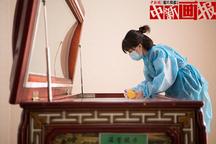����Һ��ء�������һ�����Ϊ�ֻ����3Сʱ
 ���뻥����
���뻥��������British scientists have created a new way to charge smartphones - using urine��
����Ӣ����ѧ�ҷ�����һ��Ϊ�����ֻ������·�ʽ����������Һ��
����Researchers have revealed a new system which transforms urine into electricity using a microbial fuel cell��
�����о���Ա��ʾ����һ��ϵͳ��ͨ��һ������ȼ�ϵ�أ�����Һת��Ϊ������
����Just over half a litre of urine is enough for six hours of charge time, which can power a smartphone for three hours��
����ֻ��Ҫ��������Һ�����ܹ������Сʱ��������Ϊ�����ֻ��ṩ����Сʱ������ʱ�䡣
��������Һ��ء�������һ����ɳ��ֻ�3Сʱ
����The average toilet break produces around 600ml of urine��
��������ƽ��ÿ���ϲ����ܲ���Լ600��������Һ��
����Researchers at the University of the West of England hope the technology will eventually allow people to stay connected when off-grid��
������Ӣ������ѧ���о���Աϣ������������ս���ʹ�����ܹ��ڶϵ�ʱ����Ȼ����ͨ�š�
����Professor Ioannis Ieropoulos, Director of the Bristol Bioenergy Centre, said: 'This project is all about generating electricity from waste material��
��������˹�ж�������Դ���ĵ���������˹��Ү������˹���ڱ�ʾ��������������ڽ���������ת��Ϊ������
����'In other words, turning waste into something really, really useful��
���������仰˵�����ǽ�������ת��Ϊ����֮�
����'And the microbial fuel cell technology is something that does exactly that��
������������ȼ�ϵ�ؼ����������һת�����̡�
����It takes the waste that we naturally produce and it converts it directly into electricity.'
���������Ὣ�����������й��ֱ��ת��Ϊ��������
����The fuel cells contain living microorganisms such as those found in soil or the human gut��
����ȼ�ϵ�ػ���������Щ�������������Լ����೦���еĻ������
����In breaking down and processing the urine they produce electrons which can then be harnessed into electricity��
�����ڷֽ�ʹ�����Һʱ���ǻ�������ӣ������ӿ���ת��Ϊ������
����The urinal is the result of a partnership between researchers at the University of the West of England in Bristol and Oxfam��
����������Ͱ�Dz���˹�ж�����Ӣ������ѧ����ʩ��(Oxfam)���о���Ա�ǹ�ͬ����ȡ�õijɹ���
����It is located near the students' union at the university's Frenchay campus and researchers will be hoping for brisk business at closing time��
������λ����Ӣ������ѧ���ʲ�ѧԺ��ѧ���ḽ�����о���ԱҲϣ����Ŀ��ɺ��������̻���
����Students and staff are being asked to use the urinal to donate pee to fuel the microbial fuel cell stacks that generate electricity to power indoor lighting��
����ѧ���Լ�Ա����Ҫ���������Һ��Ϊ����ȼ�ϵ���ṩȼ�ϡ�����ز����ĵ�������������������
��������Һ��ء�������һ����ɳ��ֻ�3Сʱ
����The urinal on the university campus resembles toilets used in refugee camps by Oxfam to make the trial as realistic as possible��
�������ڴ�ѧУ�е����������Ͱ���ξ�����ʩ������Ӫ��ʹ�õ���Ͱ��Ŀ���������黷�������ܽӽ���ʵ��
����The technology that converts the urine in to power sits underneath the urinal and can be viewed through a clear screen��
������������Ͱ�е���Һת��Ϊ��������һ�������̣���ֱ��ͨ��������۲쵽��
����They hope the abundant, free supply of urine will make the device practical for aid agencies to use in the field��
��������ϣ��������ѵ���Һ��ΪԮ�������ṩʵ�õĻ����豸��



















